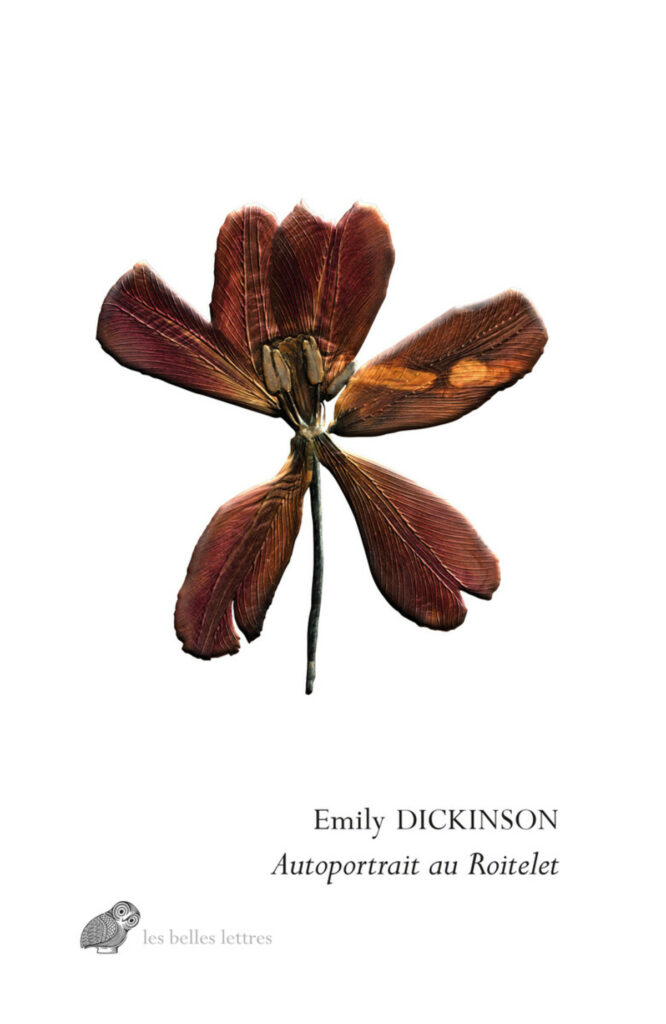Autoportrait au Roitelet
Most of Emily Dickinson’s friendships were based entirely upon correspondence and we have here all the letters to the Norcross Sisters and all the letters to Thomas Wentworth Higginson, followed by ‘Fame Is a Bee’ (a selection of poems). Themes concern flowers, self-inquiry, mind and spirit as tangible, visitable places. Between two verses she fills the world (poems) with wonder. She is very interested in death—precisely the passage to Eternity. Turns her fears into splendour, admits that she does not understand everything. Only says what she believes. She observes, questions, uses the ellipse a lot. Dickinson is magnetic as we know, feels very deeply. Profoundly moved by the mournings in her life, she made them beautiful and watchable. The writing is playful, from high sprits to melancholy, and back. It is difficult to isolate one passage, but here—the book starts as follows:
“Since it snows this morning, dear Loo, too fast for interruption, put your brown curls in a basket, and come and sit with me. I am sewing for Vinnie, and Vinnie is flying through the flakes to buy herself a little hood. It’s quite a fair morning, and I often lay down my needle, and “build a castle in the air” which seriously impedes the sewing project. What if I pause a little longer, and write a note to you! Who will be the wiser? I have known little of you, since the October morning when our families went out driving, and you.”1
After Dickinson’s death, her younger sister Lavinia found the cache of poems and together with Higginson, decided to have them published. I never know what to make of such intrusions, as I stand beholden with the work. Emily Dickinson lived 1830-1886. She was a prolific writer.
